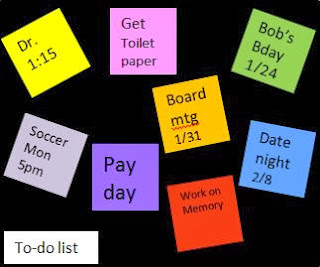Top 10 Toddler to
Preschooler Series
Developmental Toys
(Part 4 of 4)
Belinda @ Kids Matter
A toy is just a piece of household clutter until in the tiny
hands of a child, where it becomes a significant cog supporting their world of imagination
and educational development. Toys that combine play with education can be used
as effective tools in teaching children social and cognitive skills as they
mature emotionally and gain self-confidence. Toys motivate fitness,
imagination, education, and increase ones skillset’s in life.
1. Fitness Dice – Toddler+: I absolutely love this
game concept. There’s nothing like rolling dice to get the fitness started.
Roll the dice to determine which exercise you must do and how many times to do
it. (Example: Jumping jacks x 4)
2. My Giant Busy Box – Age 3+ yrs.: This is a clever
idea! Just perfect for those days when the children are confined to the house
due to the weather. A box of crafts is a great place to learn and to be
extremely creative.
3.
Disney Planes U-Command Supercharged Dusty – Age
4+: This is an excellent toy to increase hand-eye coordination and to learn
about aeronautics at the same time.
4 Vtech
Innotab 3S or Leap Frog Leappad Ultra – Age 3-9 yrs.: If you click on the
link you will see a side by side comparison of the two and it would be up to
you to determine which better meets your child’s need and skill level. Either one
will be a great “first tablet” for this age range.
5. Leap Frogs Leapreader – Age 4-9 yrs.: This is a
very nice next generation tool to aid in the learning of reading and writing.
Children can learn to write the alphabet with interactive guidance.
6. Fisher Price Laugh & Learn Crawl Around Car
– Age up to 3 yrs.: Stimulate your child’s desire to learn and have fun with
this stationary car offering 75+ songs, tunes, and phrases. The child can sit
in the car or play from the outside. The shape sorter is great for building
motor skills.
7. Playskool
Sesame Street Big Hugs Elmo – Age up to 4 yrs.: Big Hugs Elmo sings, hugs, and
wants to play. Hugs are important, what better a toy than one that hugs when
you need a hug.
8. Hasbro Furreal Friends Cuddles My Giggly Monkey
– Age 4+ yrs.: It is a lifelike and engaging friend for your little one. The
monkey giggles and reacts with over 100 sayings when swung, rocked, tickled and
fed.
9. Wooden Blocks and Large Legos – Age up to 5 yrs.:
Building anything is always a great way to entertain and educate your children.
They are only limited by their knowledge and imagination. There is nothing more
exciting to a little child than when a parent plops down in the floor with them
to build a King’s castle.
10. GeoSafari Animal Eye Viewers – Age 3 – 7 yrs.:
This fun toy allows the child to see the world through the eyes of an insect,
chameleon, and shark. The eye viewers provide fun through exploring the world
with a different perspective.




























